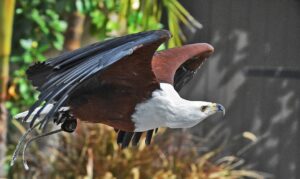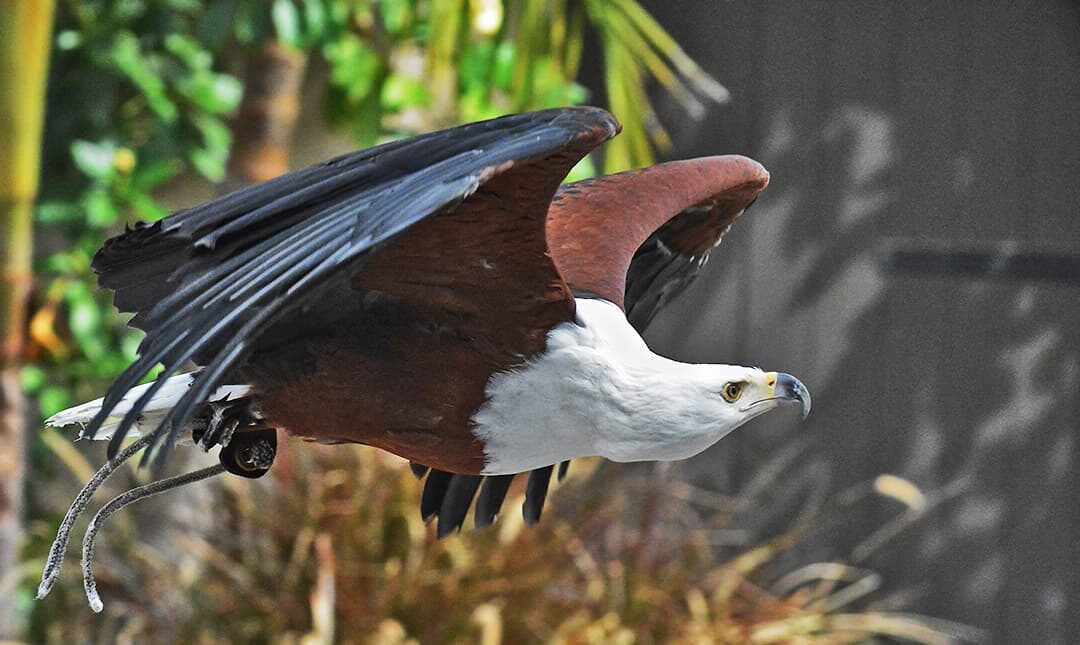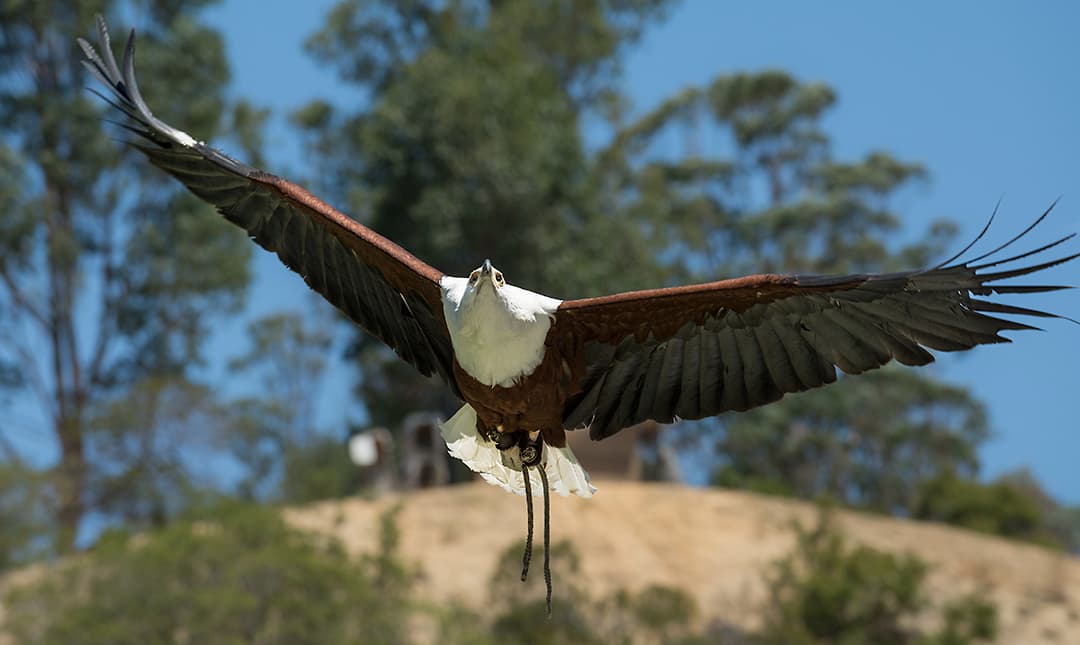About
The African fish eagle’s loud, distinctive call can be heard for miles and has earned it the nickname “the voice of Africa.” If the African fish eagle bears an uncanny resemblance to the North American bald eagle, it is no coincidence. Though their ranges are almost half a world apart, these two species occupy similar niches in their respective habitats and bear many of the same adaptations—an excellent example of convergent evolution.
Like most raptors, African fish eagles mate for life. Even so, the male must court the female each year, and he does so in spectacular fashion. The pair meet in mid-air, lock talons, and free-fall until they separate just above the ground. They do this repeatedly until they mate. They will reuse a nest for many years, and both help to build and repair it. Over time, the nests can reach up to six feet across as branches and twigs are added annually. Two white or mottled eggs are laid. The female is the primary brooder, sitting on (incubating) the eggs for approximately 45 days, but the male helps out and gives his mate an occasional break. Once the eggs have hatched, both male and female hunt and care for the chicks, even after they have fledged.
These eagles are called fish or sea eagles because they feed primarily on fish. They rely on the element of surprise, flying into the sun so that they cast no shadows on the water, which would alert the fish. The birds use their powerful talons to grasp fish near the water surface. These eagles can carry up to six pounds, so larger fish are dragged to the shore. Hunts are successful only 10 percent of the time. Because of this low rate, fish eagles will sometimes instinctively steal prey from other birds, even if they are not hungry.


HABITAT
These raptors are found near freshwater rivers, lakes, and reservoirs throughout Africa.
DIET
Fish is the preferred prey, but these carnivores will also eat amphibians, water birds, small mammals, and carrion.
PHYSICAL CHARACTERISTICS
Body length is between 25 and 30 inches, with an average wingspan of six feet (male) and eight feet (female). Females weigh seven to eight pounds; males weigh four to six pounds. Lifespan is 16 to 24 years.
LOCATION WITHIN THE ZOO
You may see this species in the World of Birds Show.


